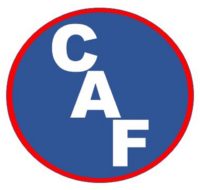W + Conc + A + A = Foam (Bubbles)
Concentrates – Oh Boy!!!
Water is water, air is air and agitation is agitation – but concentrates?
There are two kinds of concentrates used in the fire service – those that foam, and those that do not.
NOTE: For any concentrate to work with an aspirating nozzle or CAFS, it must be bubble forming!!
All concentrates come in similar 5-gal buckets, those that foam make the same looking white bubbles.



But the chemistry in those similar buckets is quite different, and thus, the confusion when it comes to making bubbles to fight fire.
Concentrate – any chemical with little or no water added. The base product as shipped to the user.
Detergents (for home, industrial or firefighting use) can be shipped as a solid or liquid. Most firefighting foam concentrate has a small amount of water added to make and keep it a liquid. When a detergent concentrate is added to a large amount of water as directed by the manufacturer for the intended use, the liquid mix becomes a “SOLUTION” [link]. The % Solution for firefighting purposes is the % of concentrate mixed with water for application purposes. For example, a .3% sol for CAF is .3% concentrate + 99.7% water.
Concentrates have one purpose – to modify/enhance the water for a specific purpose. Chemistry!!! All Fire Foam concentrates are Surfactants! (link)
To make Foam, at a minimum, the Concentrate must 1) mix with Water, 2) Produce a variety of bubble sizes, 3) stick to vertical surfaces, and 4) Be environmentally friendly.
NOTE: Always consult the Product Safety Data Sheet (SDS). Some products marketed actually state in the SDS that they are NOT a Foam.
The Foam Concentrate market can be very confusing and the sales people do not make it easier. 1st – A-Foam is a very different product from B-Foam. All the current controversy involving Firefighting Foam being outlawed and banned is due to PFOA’s and involves B-Foam. A-Foam IS NOT part of this issue.
Before Purchasing a Foam Concentrate, check with your AHJ (link)to see what Foam products are allowed and which ones are banned.
Since A-Foam Concentrate is basically a detergent, similar to some common household detergents, a department might find it economical to use a cheaper product for training (for example Car Wash Detergent). Again, check with the AHJ and SDS prior to making any such purchase.
A quick note on the New Class B “Green Foams”, read the data carefully. Foam proportioning systems are designed for specific concentrate viscosities. Some of the “Green” foams are higher viscosity and may cause issues in the proportioning systems. Research the data thoroughly and with care.
NOTE: Here at CompressedAirFoam.com, we are dedicated to the promotion of the use of Class A Foam and CAF in firefighting for the purpose of firefighter safety.
However, with all the recent and ongoing changes and confusion going on in the concentrate world, it has been decided to discuss all forms of concentrates to ensure that the firefighting world has the truth available in making tactical and purchasing decisions.
Read on to wade through the world of Firefighting Concentrates and learn the specific enhancement purposes of the different concentrates.

=============================================================================













































